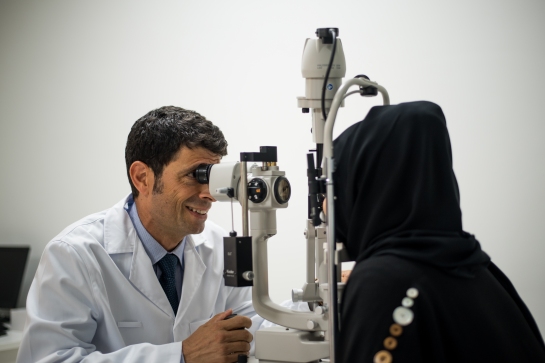Patients may be confused when considering to undergo cataract surgery. If you check the internet for information, you may be offered a choice of two surgical options: traditional cataract surgery or laser-assisted cataract surgery.
Cataract surgery is one of the most common surgeries in the world and it is recognized as a safe and effective procedure. In recent years, laser-assisted cataract surgery has been offered as a new step forward in this field. But, is it really?
Modern cataract surgery is called phacoemulsification. The objective is to break, melt and vacuum the lens out of the eye using the ultrasound issued by a probe. We set it into the eye through such small incision that self-seals. Surgeons create these incisions with small precision metal or diamond blades. We also open the lens capsule with a circular tear that allows us to reach the lens body and remove it. The surgery finishes with the implantation of an artificial intraocular lens that replaces the former human cloudy lens into the remaining capsular bag.
With laser-assisted cataract surgery, a computer analyses the characteristics of your eye to create the incisions, the round capsular tear and cut the lens in small pieces to be then removed using the same ultrasound probe that we use in traditional cataract surgery. The IOL is implanted the same way also and the corneal incisions usually do not require stitches. Both procedures are basically the same technique and the recovery and results are the same.
It seems we have an enhancement in cataract surgery but no study has shown today that laser-assisted cataract surgery results in fewer complications or better visual outcomes than traditional cataract surgery. With any type of cataract surgery, your outcome depends in large part on the skill and experience of your eye surgeon. For a skilled surgeon is not a problem to perform the steps that the laser do, and the steps where there are more surgical problems are those not made by the laser that requires the skilled surgeon’s hand.
There are no clear indications today for laser-assisted cataract surgery over the traditional procedure. Some centres are offering it in cases of high astigmatism to create corneal specific incisions to decrease it, but we also can add LASIK or PRK to enhance this cases after the cataract surgery. We call this procedure bioptics.
The final consideration is that the price is higher for laser-assisted cataract surgery. Laser machines are expensive and there is an extra cost to be charged for the surgery fees. When we talk about health, I think the price is the last thing to talk about, but we have to. Most of my patients choose the expensive procedure if it gives an advantage over the cheap one. They can be better results, lower pain, fastest recovery… But for what we have seen by now, there are no clear advantages to perform most of the cases with the laser. On the other hand, this technology is under development now and it can give us more benefits in the future. I think it can be the next step forward to enhance cataract surgery. And it shows that the current “traditional” phacoemulsification with all the technological development it has had, is difficult to be improved.
Tip – It is funny to talk about “traditional” surgery to refer a technique that was a big jump 30 years ago. At that time, most of the surgeons were changing to it from the “traditional” extracapsular extraction. But time passes very fast!

